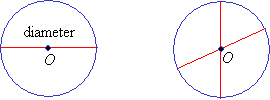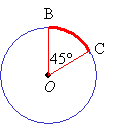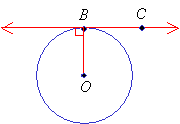Circles: Diameter, Chord, Radius, Arc, Tangent
In these lessons, we will learn the following parts of a circle: diameter, chord, radius, arc and tangent.
We will also learn about congruent circles, concentric circles and intersecting circles.
Related Pages
Circles
Tangent Of A Circle
Chords Of A Circle
The following figures show the different parts of a circle: tangent, chord, radius, diameter, minor arc, major arc, minor segment, major segment, minor sector, major sector. Scroll down the page for more examples and explanations.

-
Printable & Online Circle Worksheets
Printable
Circumference Worksheets
Area of Circle Worksheets
Area & Circumference Worksheets
Find Radius from Circumference
Find Radius from Area
Find Area from Circumference or vice versa
Circle Word ProblemsOnline
Circumference of Circle
Area of Circle
Area & Circumference of Circle
Circle Problems: Circumference, Area
Circle Word Problems 1
Circle Word Problems 2
Area of shaded regions that include circles
Area of figures that include circles
Area of figures that include circles
Arc Length & Area of Sector (Degrees)
Arc Length & Area of Sector (Radians)
Convert between Radians and Degrees
Circle
In geometry, a circle is a closed curve formed by a set of points on a plane that are the same distance from its center O. That distance is known as the radius of the circle.

Diameter
The diameter of a circle is a line segment that passes through the center of the circle and has its endpoints on the circle. All the diameters of the same circle have the same length.

Chord
A chord is a line segment with both endpoints on the circle. The diameter is a special chord that passes through the center of the circle. The diameter would be the longest chord in the circle.

Radius
The radius of the circle is a line segment from the center of the circle to a point on the circle. The plural of radius is radii.

In the above diagram, O is the center of the circle and ![]() and
and ![]() are radii of the circle. The radii of a circle are all the same length. The radius is half the
length of the diameter.
are radii of the circle. The radii of a circle are all the same length. The radius is half the
length of the diameter. ![]()
Arc
An arc is a part of a circle.

In the diagram above, the part of the circle from B to C forms an arc.
An arc can be measured in degrees.
In the circle above, arc BC is equal to the ∠BOC that is 45°.
Tangent
A tangent is a line that touches a circle at only one point. A tangent is perpendicular to the radius at the point of contact. The point of tangency is where a tangent line touches the circle.

In the above diagram, the line containing the points B and C is a tangent to the circle.
It touches the circle at point B and is perpendicular to the radius
![]() .
Point B is called the point of tangency.
.
Point B is called the point of tangency.
Parts Of A Circle
The following video gives the definitions of a circle, a radius, a chord, a diameter, secant, secant line, tangent, congruent circles, concentric circles, and intersecting circles.
A secant line intersects the circle in two points.
A tangent is a line that intersects the circle at one point.
A point of tangency is where a tangent line touches or intersects the circle.
Congruent circles are circles that have the same radius but different centers.
Concentric circles are two circles that have the same center, but a different radii.
Intersecting Circles: Two circles may intersect at two points or at one point. If they intersect at one point then they can either be externally tangent or internally tangent.
Two circles that do not intersect can either have a common external tangent or common internal
tangent.
In the common external tangent, the tangent does not cross between the two circles.
In the common internal tangent, the tangent crosses between the two circles.
Parts Of A Circle, Including Radius, Chord, Diameter, Central Angle, Arc, And Sector
Try out our new and fun Fraction Concoction Game.
Add and subtract fractions to make exciting fraction concoctions following a recipe. There are four levels of difficulty: Easy, medium, hard and insane. Practice the basics of fraction addition and subtraction or challenge yourself with the insane level.

We welcome your feedback, comments and questions about this site or page. Please submit your feedback or enquiries via our Feedback page.